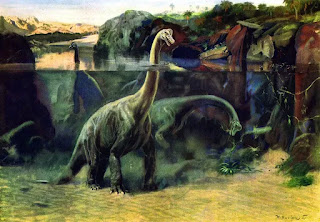Cleopatra VII of Egypt is a historical celebrity for a number of reasons, chiefly her fruitful political and romantic entanglement with Julius Caesar, her doomed political and romantic entaglement with Mark Antony, her subsequent suicide by asp and her status as Egypt's last Pharaoh.*
More recently, she's received more recognition as a wily and ruthless player in the Ptolemys' deadly game of thrones, a political figure in her own right, rather than the caracatured exotic über-seductress of powerful men.
All of this stuff's historically interesting, but I'd say that her most lasting legacy isn't necessarily a dramatic life filled with passion and power politics and its retelling down the ages, but something even more ubiquitous; the calendar which most of the world uses today.
So here's the argument. Most of the world today uses the Gregorian solar calendar. The Gregorian calendar was introduced in 1582 by Pope Gregory XIII, as a slightly more accurate upgrade to the earlier Julian calendar.
The Julian calendar is, of course, named after Julius Caesar, who introduced it to Rome in 45 BC, replacing the earlier Roman calendar.
Unlike the transition from Julian to Gregorian, which was a refinement of the same basic calendrical system, the Julian reform was fundamental, substituting a new, solar calendar for the old Roman lunisolar calendar which, by this stage, had some serious issues:
So where does Cleopatra fit in?
Well, back in 48 BC, Caesar, having routed Pompey the Great in battle, had pursued his hard-pressed rival to Egypt. Ptolemy XIII, in a misguided attempt to curry favour with the victorious Caesar, had Pompey assassinated, a gesture which backfired, leading an enraged Caesar to side with Ptolemy's co-ruler and sister, Cleopatra, depose Ptolemy and place his new ally (and lover) on the throne of Egypt.
In 47 BC, Cleopatra bore a son, Caesar probably being the father, while Caesar went off to do more civil war stuff.
But this wasn't the end of their relationship. In 46 BC, Cleopatra and her little brother (and co-ruler in name only), Ptolemy XIV, came to Rome and stayed at Caesar's villa. A few things came out of this visit, including Cleopatra entertaining Rome's great and good, Caesar declaring the Egyptian queen a "friend and ally of the Roman people" and a golden statue of Cleopatra being put up in the newly-built Temple of Venus Genetrix.
There was one, more consequential, result of Cleopatra's stay in Rome, according to Pliny the Elder, who identifies the Greco-Egyptian astronomer, Sosigenes of Alexandria, who was presumably part of Cleopatra's retinue, as the guy who actually devised the Julian calendar, proposed by Caesar in 46 BC and introduced in 45 BC. In this context, the radical move from a lunisolar to a solar calendar makes sense, as the Egyptians already used a solar calendar.
So, yeah, you could argue that without Cleopatra, Rome wouldn't have adopted the Julian solar calendar, the direct ancestor of most widely used calendar used in the world today.**
In a world without Cleopatra, the superpower of the ancient world might have refined its calendar along existing lunisolar lines and the modern world's dominant calendar might have had a lot more in common with, for example, the Hebrew calendar.
There are, of course, counter-arguments:
1. We only "know" that Sosigenes devised the calendar from one very short passage (Pliny's Natural History Book 18, 210-212) so it's not certain that Sosigenes really was the calendar guy. Aristarchus of Samos has also been credited as coming up with the Julian calendar, although there's even less direct evidence for this version.
2. If Pliny was right, and it was Sosigenes, then it would be more accurate to call it Sosigenes' calendar, not Cleopatra's, which would give my post title way less name recognition.
3. Name-checking Cleopatra might also make this a version of the questionable "great man" version of history (in this case "great woman", obviously). In a counterfactual world where Cleopatra, or Julius Caesar, or both of them, had never been born, it's likely that Rome would still have dominated Ptolemaic Egypt as a client state before absorbing it completely, so Greco-Egyptian scholarship and the eventual adoption of a calendar based on the Egyptian calendar might have been on the cards anyway.
But it's still at least plausible to think that the world's most widespread calendar might not be preeminent had chance not led to Julius Caesar meeting Cleopatra. And it's about as good an illustration of the Cleopatra's nose theory of history as I can think of.
*Roman pharaohs don't count.
**Not something I'd thought about until I came across a reference to the Egyptian influence on the Julian calendar in this video.













